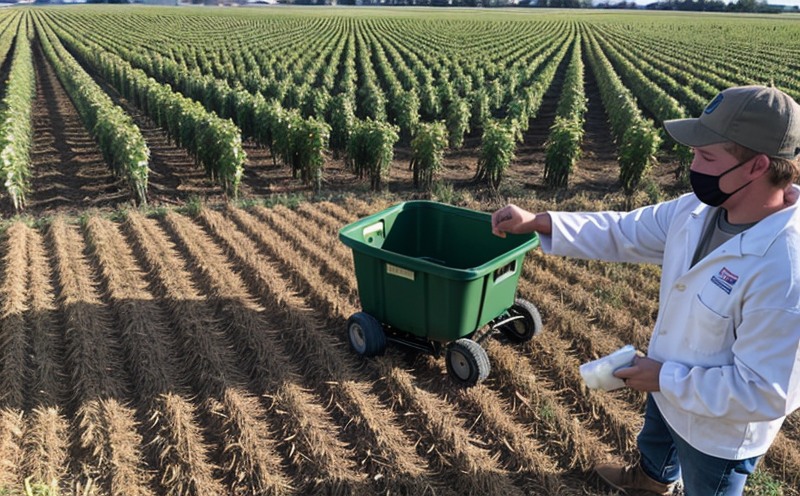Grain Broken Percentage Testing
The grain broken percentage testing is a critical procedure in agricultural and forestry quality assurance. This service evaluates the proportion of damaged grains within harvested crops, which directly impacts the overall quality, market value, and processing efficiency. For quality managers and compliance officers dealing with grain handling operations, understanding this parameter ensures that only sound grains are processed or sold. Broken grains can arise from various factors during harvesting, storage, and transportation, including machinery damage, moisture content issues, and physical stresses.
Broken grains affect the milling process and product yield. In flour mills, for example, high broken grain percentages reduce the efficiency of the grinding process, leading to increased production costs due to lower flour quality and quantity. For procurement departments, this service helps in setting realistic specifications during supplier negotiations, ensuring that only high-quality raw materials are procured.
The testing procedure involves several steps: sample preparation, sieving, and visual inspection using calibrated scales or electronic balances. The grain is first sieved through a series of mesh sizes to separate the broken grains from whole kernels. A representative sample is then weighed, and the broken grains are counted manually or with automated sorting systems.
International standards such as ISO 3689:2017 provide guidelines for this testing method, ensuring consistency across different laboratories. Compliance engineers use these standards to validate their internal procedures and ensure that they meet industry benchmarks.
| Step | Description |
|---|---|
| Sample Preparation | Select a representative sample from the bulk grain using a mechanical divider. Ensure that the sample is free of foreign materials. |
| Sieving | Carefully sieve the grain through appropriate mesh sizes to separate whole kernels from broken pieces. This step must be conducted in a controlled environment to avoid contamination. |
| Visual Inspection and Counting | Perform visual inspection on the sieved samples using calibrated scales or electronic balances. Manually count the number of broken grains against the total sample weight. |
| Data Analysis | Calculate the percentage of broken grains by dividing the mass of broken grains by the total mass of the sample and multiplying by 100. |
Accurate measurement is paramount in this process. The precision of the scales used can significantly influence the final results, affecting decisions on whether to accept or reject a batch of grain for processing or sale. This service not only enhances product quality but also supports sustainable agricultural practices by reducing wastage and optimizing resource use.
Scope and Methodology
- Select a representative sample from the bulk grain using a mechanical divider.
- Carefully sieve the grain through appropriate mesh sizes to separate whole kernels from broken pieces. This step must be conducted in a controlled environment to avoid contamination.
- Perform visual inspection on the sieved samples using calibrated scales or electronic balances.
- Manually count the number of broken grains against the total sample weight.
- Calculate the percentage of broken grains by dividing the mass of broken grains by the total mass of the sample and multiplying by 100.
The testing process adheres to international standards such as ISO 3689:2017. These guidelines ensure that the results are consistent, reproducible, and reliable across different laboratories. This standardization is crucial for ensuring accurate quality assessment in agricultural and forestry sectors.
Benefits
- Enhanced Product Quality: Identifying and rejecting broken grains improves the overall product quality, leading to better marketability and customer satisfaction.
- Economic Efficiency: Minimizing broken grain percentages reduces processing costs by optimizing milling efficiency and minimizing wastage.
- Sustainable Practices: By ensuring only high-quality raw materials are used in production processes, this service supports sustainable agricultural practices.
- Informed Decision-Making: Accurate testing provides valuable data for procurement departments to make informed decisions about supplier selection and contract negotiations.
The Grain Broken Percentage Testing is essential for maintaining the integrity of grain quality. It ensures that only sound grains are processed or sold, thereby reducing losses due to broken grains. This service supports the agricultural sector in achieving higher standards of quality control and compliance with international standards.
Quality and Reliability Assurance
The reliability of Grain Broken Percentage Testing is ensured by adhering strictly to internationally recognized standards such as ISO 3689:2017. This standard provides a clear methodology for sample preparation, sieving, visual inspection, and counting processes, ensuring that the results are accurate and consistent.
Our laboratory uses state-of-the-art equipment, including calibrated scales and electronic balances, to ensure precision in measurement. The use of these instruments minimizes human error, providing more reliable data. Our team of experts is trained in following the guidelines set by ISO 3689:2017, ensuring that every test conducted meets the highest quality standards.
Customer satisfaction is paramount for us. We provide detailed reports with actionable insights based on our testing results. These reports help clients make informed decisions about their procurement and processing strategies. Our commitment to accuracy, reliability, and consistency ensures that you receive dependable results every time.





